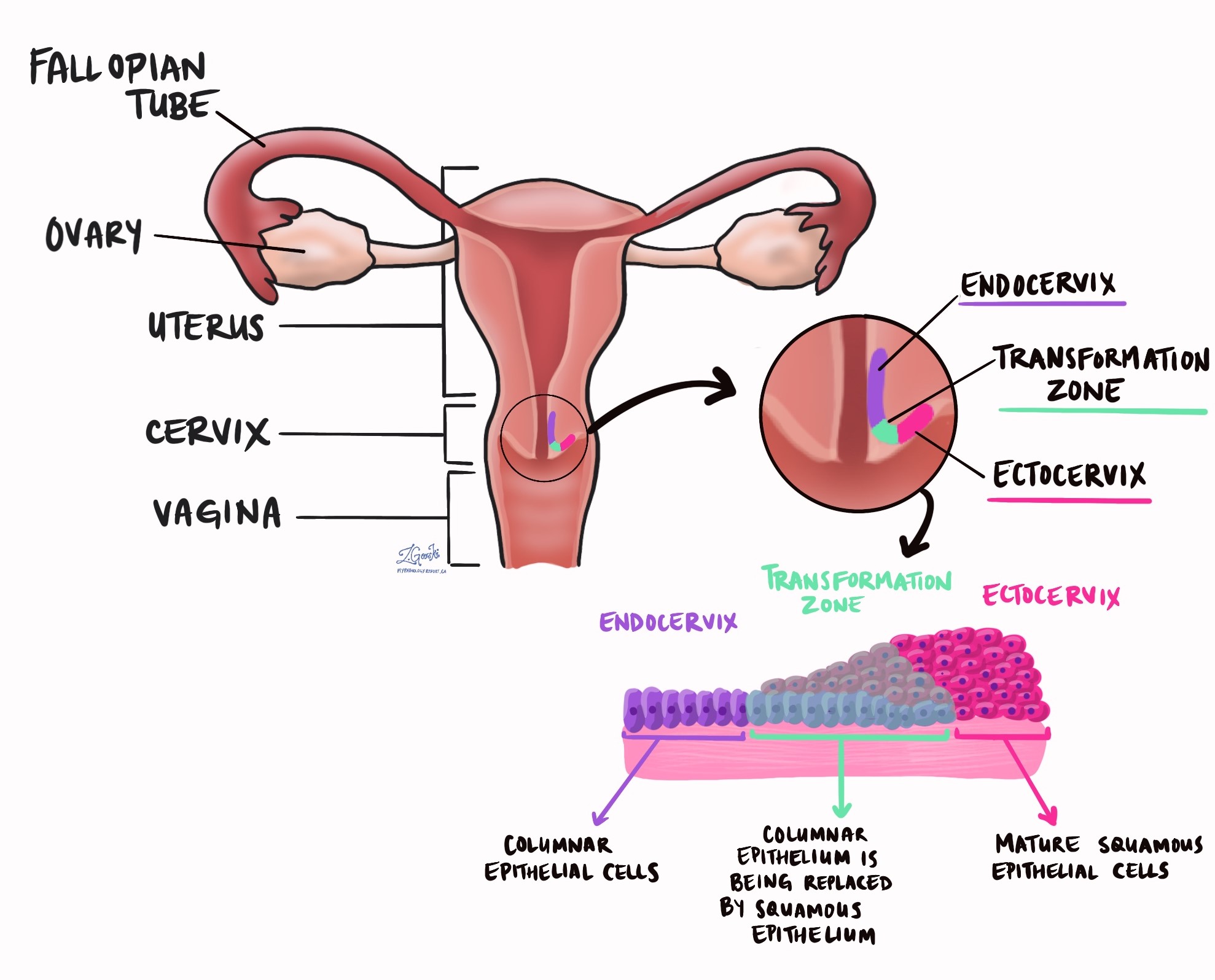by Jason Wasserman MD PhD FRCPC
December 18, 2023
Low grade squamous intraepithelial lesion (LSIL) of the cervix is an abnormal growth caused by infection with human papillomavirus (HPV). The virus infects squamous cells found in a part of the cervix called the transformation zone. Over time the infected cells develop genetic changes that lead to LSIL. The abnormal growth seen in LSIL is an example of dysplasia. In addition to the cervix, LSIL can also affect the vagina and vulva. In both women and men, LSIL may also involve the anal canal and peri-anal skin.

Can low grade squamous intraepithelial lesion turn into cancer over time?
Although LSIL is considered a non-cancerous disease, there is a small risk that it will turn into a type of cervical cancer called squamous cell carcinoma over time. However, for most patients with LSIL, the immune system will remove the infected cells and the tissue will return to normal. High grade squamous intraepithelial lesion (HSIL) is a related condition that is also caused by HPV. However, compared to LSIL, the risk of developing cancer from HSIL is much higher.
How is the diagnosis of low grade squamous intraepithelial lesion of the cervix made?
The diagnosis of LSIL is usually made after some cells are removed from the cervix in a procedure called a Pap test or a biopsy. The diagnosis can also be made when part or all of the cervix is removed for another reason. The tissue sample is then sent to a pathologist who examines it under the microscope.
What does low grade squamous intraepithelial lesion look like under the microscope?
When examined under the microscope, the abnormal squamous cells in LSIL are darker and larger than normal squamous cells. The chromatin (genetic material) which is found inside the nucleus of the cell may be described as coarse or vesicular which means it is divided into small groups. While normal squamous cells have one nucleus, some of the abnormal cells in LSIL may have two nuclei. The abnormal cells found in LSIL are sometimes called koilocytes.

What happens after low grade squamous intraepithelial lesion is diagnosed on Pap test?
After the first diagnosis of LSIL, a repeat Pap test should be performed in six months. If LSIL is seen again, your doctor should refer you to a specialist who will perform a colposcopy. A colposcopy allows your doctor to see the entire outer surface of the cervix.
During the colposcopy, the doctor will be looking for any areas that look abnormal on the surface of the cervix. If an abnormality is found, the doctor may decide to take a small biopsy, to confirm the diagnosis of LSIL and to look for pre-cancerous and cancerous changes that can be seen with LSIL. Your doctor may also take a small sample of tissue from the endocervical canal and endometrium.
It is recommended that most patients diagnosed with LSIL undergo a repeat Pap test after 6 months. If you have been diagnosed with LSIL, talk to your doctor about the treatment options available for you.
About this article
This article was written by doctors to help you read and understand your pathology report. Contact us if you have questions about this article or your pathology report. For a complete introduction to your pathology report, read this article.


